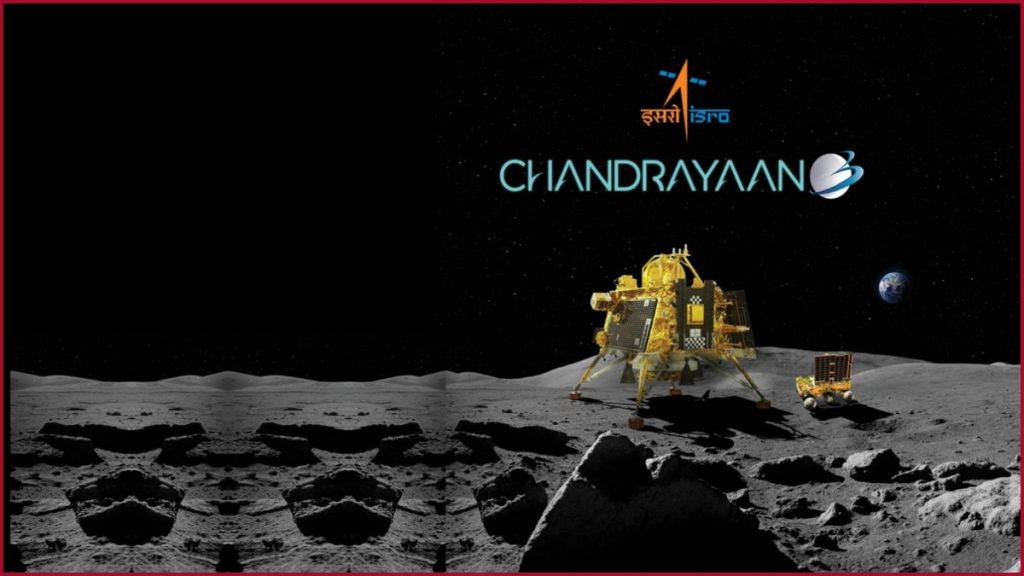New Delhi: The Indian Space Research Organisation (ISRO) has made a notable move in its Chandrayaan-3 mission, commanding the Vikram Lander to ignite its engines and ascend by approximately 40 cm from its initial landing point. This maneuver has raised questions about the rationale behind ISRO’s decision to perform a soft landing on the Moon once again.
Chandrayaan-3, launched on July 14 as the fourth operational flight of the LVM3 rocket from the Satish Dhawan Space Station in Andhra Pradesh’s Sriharikota, achieved its intended lunar landing on August 23. The landing site was later named the ‘Shiv Shakti Point’ by India.
ISRO has clarified that Vikram Lander’s successful execution of a hop experiment, ascending a few centimeters from the lunar surface, has fulfilled all its objectives. This maneuver, often referred to as a “kick-start,” plays a crucial role in studying future sample returns and human missions.
Chandrayaan-3 has achieved several milestones during its operational phase, including:
1. Rover Exploration: The Pragyan rover covered a distance of over 100 meters before entering sleep mode. It’s worth noting that the rover’s communication range is limited to 500 meters from the Vikram lander.
2. Historic Sulphur Discovery: The Laser-Induced Breakdown Spectroscope (LIBS) instrument onboard the rover confirmed the presence of Sulphur (S) in the lunar surface near the south pole, marking a groundbreaking in-situ measurement. LIBS also detected several other elements.
3. Pioneering Plasma Measurements: The Radio Anatomy of Moon Bound Hypersensitive Ionosphere and Atmosphere – Langmuir Probe (RAMBHA-LP) payload conducted groundbreaking measurements of the near-surface lunar plasma environment over the south polar region. Preliminary assessments suggest relatively sparse plasma near the lunar surface, which could have implications for radio wave communication in future lunar missions.
4. Seismic Activity Recording: The Instrument for the Lunar Seismic Activity (ILSA) recorded rover and payload movements. It also captured a natural event on August 26, which is currently under investigation.
5. Thermal Behavior Exploration: The ChaSTE (Chandra’s Surface Thermophysical Experiment) instrument measured the temperature profile of the lunar topsoil around the pole to better understand lunar surface thermal characteristics. This marked the first such profile for the lunar south pole, with ongoing detailed observations.
6. Alternate Sulphur Confirmation: The Alpha Particle X-ray Spectroscope (APXS) onboard the rover confirmed the presence of Sulphur (S) in the region using a distinct technique alongside other minor elements.
These achievements underscore India’s commitment to lunar exploration and the advancement of scientific knowledge about the Moon’s composition and characteristics.
Currently, ISRO does not have any planned human missions or Moon sample return missions. Instead, the organization is focused on the Gaganyaan project, designed to demonstrate India’s human spaceflight capabilities by launching a crew of three members into a 400 km orbit for a three-day mission before safely returning to Earth via a landing in the Indian sea waters.
In the context of lunar exploration, China’s Chang’e 6 mission, scheduled for launch in 2024, is set to perform China’s second sample return mission. Meanwhile, NASA’s Artemis program aims to reestablish a human presence on the Moon for the first time since the Apollo 17 mission in 1972. Although Artemis III is planned as a crewed lunar exploration mission, it is not expected to occur before 2025, with Artemis II slated for November 2024.

